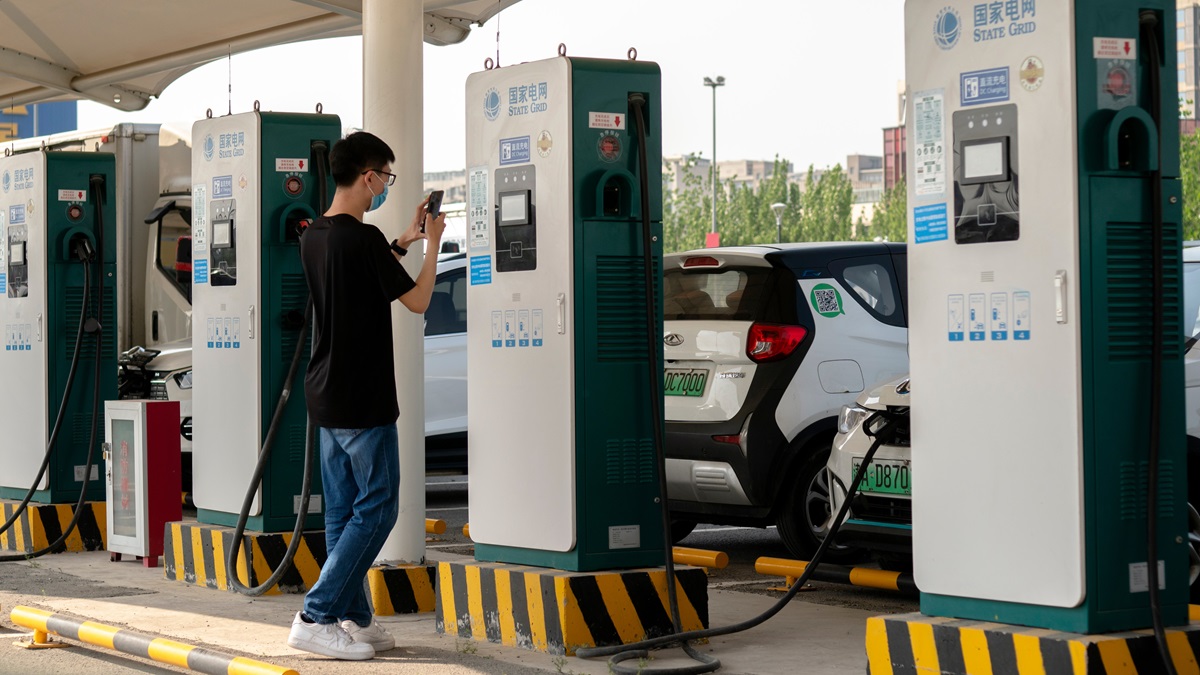An UNCTAD report explores China’s strategies to achieve both economic growth and climate goals and the policy lessons for other countries of the global South.
© Shutterstock/YPPicturesPro | Electric car sharing service in Tianjin, China.
As the world’s second-largest economy and biggest greenhouse gas emitter, China’s shift to green and low-carbon growth has a significant bearing on global efforts to meet the Paris Agreement to curb climate change.
Ahead of this year’s UN climate conference (COP28), an UNCTAD report examines China’s experience in “greening” its development while sustaining its economic growth, marked by rapid industrialization and urbanization over the past four decades.
It looks at how the country, aiming to peak emissions by 2030 and achieve carbon neutrality by 2060 (the 30-60 targets), has woven the green low-carbon transition into its national economic policies and key sectors like energy, transportation, industry, and urban and rural development.
The analysis helps shed light on challenges that other developing countries could similarly face to green their economic structures and policy strategies that could facilitate the transformation.
“How China pursues the dual economic and climate goals not only presents a new dimension of its development story but also enriches peer-learning among developing countries,” said UNCTAD economist and lead author Dawei Wang while launching the report on 5 November at the 6th Hongqiao International Economic Forum in Shanghai.
Doubling down on renewables
In 2020, China’s energy mix remained dominated by coal (56.8%), followed by oil (18.9%), natural gas (8.4%) and other sources (15.9%) including renewables and nuclear. To facilitate the energy transition, the country has adopted three main approaches.
From the demand side, China is pursuing energy conservation and electrification. From the supply side, it has set a target to reduce fossil fuel consumption and develop renewables. The country is also working to diversify supplies and build a stronger smart grid to ensure energy security.
Additionally, China is focusing on increasing renewable energy in transportation – such as the development of electric vehicles – and improving energy efficiency in its transportation system.
Towards greener industries
Unlike in developed economies, where households are the primary source of urban greenhouse gases, in China’s cities the main source of emissions is industrial processes.
The country is thus prioritizing measures to lessen the environmental impact of top-emitting industries such as steel, petrochemicals, nonferrous metals and building materials.
These include adjusting the industrial structure and layout, improving energy efficiency, developing a circular economy and promoting green manufacturing systems.
Macroeconomic policies to build resilience
The report suggests that China’s macroeconomic policies could perform two key functions in the context of climate change and the country’s 30-60 targets.
First, since climate change and extreme weather events can severely damage an economy, macroeconomic policies should bolster economic stability and build resilience against climate-induced shocks.
Second, they should shore up resources and investments to facilitate the country’s low-carbon transition.
A national green financial system
China is one of the world’s largest green financing markets, with its national green credit reaching a balance of 11.95 trillion Chinese yuan ($1.68 trillion) in 2020.
The report highlights that China has established a national green financial system. At the institutional level, it has set out green finance standards and mechanisms for environmental information disclosure.
The system encompasses macroprudential policies, monetary policies, and green finance policies covering bonds, insurance, investment funds, and national emission trading markets.

